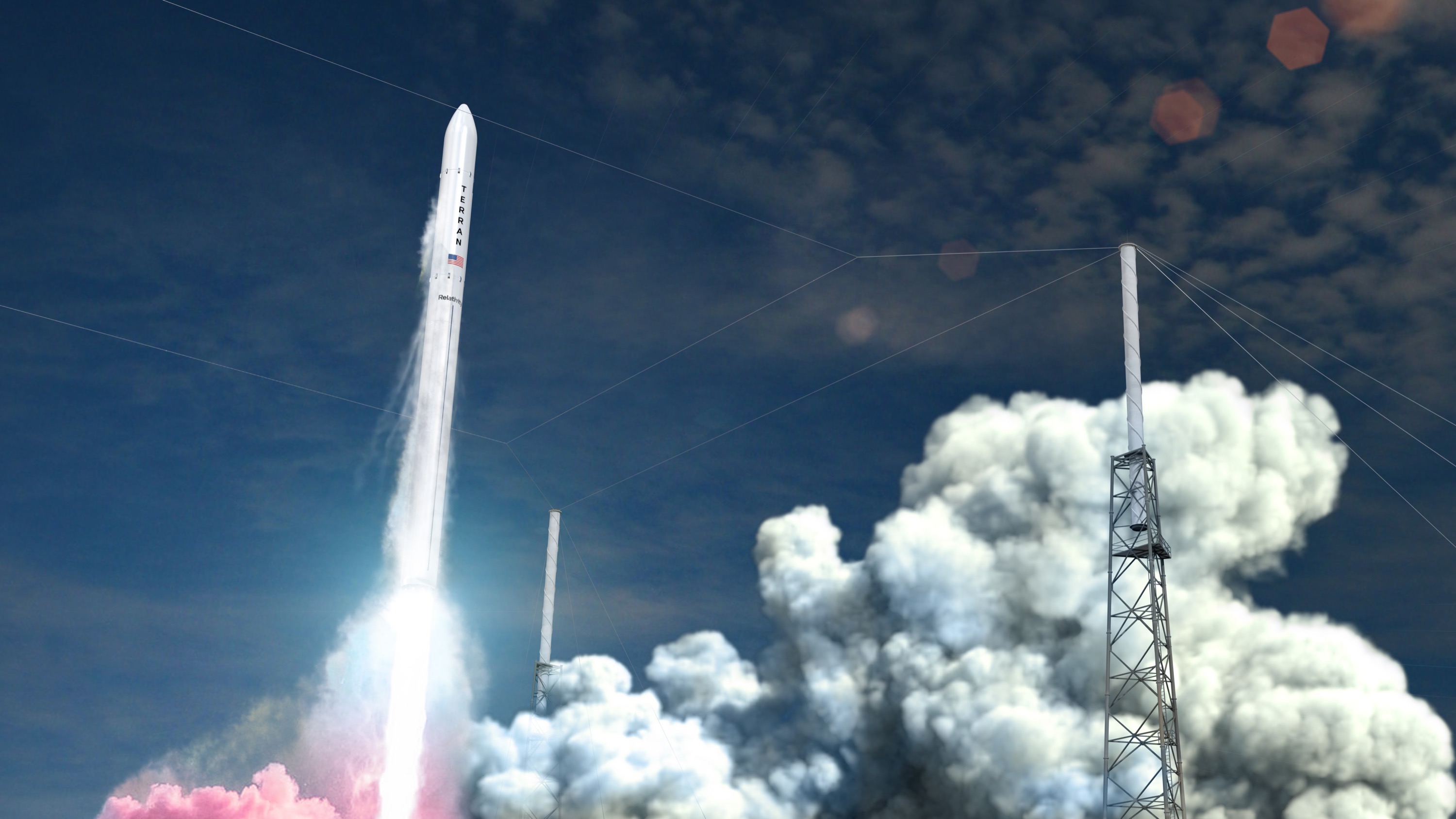- Relativity Space is a startup focused on 3D-printed rockets that was founded by former SpaceX and Blue Origin engineers
- The company has secured a launch site at Cape Canaveral Air Force Station in Florida.
- Called Launch Complex 16, it’s a historic location where missiles and Space Race hardware were once tested.
- The US Air Force awarded Relativity Space a contract for the site, saying they “were impressed” by the company’s team and technologies.
- Relativity Space seeks to prove that its first rocket, Terran 1, and overall approach is viable in an increasingly competitive market for launches.
Relativity Space, an aerospace startup based in Los Angeles, has secured a historic home in Florida from which to launch its 3D-printed rockets. The site is right in the backyard of its biggest competitors.
The company was founded in 2015 by Jordan Noone and Tim Ellis, two young defectors from more-established SpaceX and Blue Origin (respectively). Relativity’s big gamble is to use cutting-edge “Stargate” 3D-printing technology to simplify the construction of rocket parts and engines – which is typically inordinately complex – by about 100-fold.
The company believes this scheme will allow for more automation in manufacturing, decrease errors, increase reliability, speed up the pace of development, and ultimately lower the cost of access to space dramatically. Relativity’s slogan is “Rockets built and flown in days instead of years.”
“We believe it will be even more disruptive technology than what you’ve seen from other private space companies,” Ellis told Business Insider. To date, Relativity has raised more than $45 million, some of it from famed investor Mark Cuban, and brought on 60 full-time employees.
Relativity's first big goal is to build, test, and launch a 100-foot-tall orbital rocket that it calls Terran 1. But to prove Terran 1 works - not to mention Relativity's overall 3D-printing approach - the startup needs a place to launch the rocket.
On Thursday, Relativity announced that it has won a competitive contract from the US Air Force to retrofit and exclusively use Launch Complex 16 (or LC-16) at Cape Canaveral Air Force Station in Florida.

"We're the very first venture-backed company that has won approval from the USAF for this site and only the fourth company to join the Cape," Ellis said. "This is the most elite launch facility in the world. This is where most of the history for launch has occurred."
SpaceX has the rights to Launch Complex 40, located just north of Relativity's new site, and Blue Origin is leasing Launch Complexes 11, 36A, and 36B to the south. United Launch Alliance - a daughter company of Boeing and Lockheed Martin - also leases launch complexes in Cape Canaveral.
If Relativity can successfully launch a Terran 1 rocket and send a payload to orbit within five years, it will get the chance to lease LC-16 for perhaps 20 years.
A giant leap for Relativity Space

Depending on how each Terran 1 rocket is outfitted, Ellis says it could launch up to 2,750 pounds (1,250 kilograms) into close orbits around Earth for about $10 million per launch.
SpaceX's larger, more powerful, and reusable Falcon 9 rockets can launch about 10 times that much payload for roughly $62 million - about one-third cheaper per pound.
But Ellis says Terran 1 is just a starting point.
"We can capture several billion dollars' worth of payloads in that class," Ellis said, adding that "exciting news" may be announced this year on that front.
Relativity has already gotten a lot done since its founding in 2015. The company built a 60,000-square-foot factory and headquarters in Los Angeles and also fleshed out its Stargate 3D-printing technology. It also secured a 20-year agreement to use rocket-engine test stands at NASA's Stennis Space Center in Mississippi.
Relativity is using the Mississippi site to test-fire its 3D-printed Aeon rocket engines. Ellis previously told Business Insider that so far, the engines have been tested successfully more than 100 times. Such tests are crucial, since nine of the engines will line the lower stage (or booster) of every Terran 1 rocket, and one engine will propel the upper stage (and its payload) into orbit.

Although one aerospace industry analyst has expressed uncertainty about the company's long-term value, Ellis offered a few ways to counter these doubts.
He said Relativity is poised to make good on its investments by reducing complexity, simplifying supply chains, and speeding up innovation. He added that the company has has hired about a dozen senior leaders from other private space companies.
Plus, Ellis noted that competition for the LC-16 site was "fierce," since many aerospace startups in the US are looking to secure a launchpad. That makes the Air Force's sign-off significant.
"I view it as a huge vote of confidence, not only that Relativity will launch rockets to orbit, but [the USAF] vetted our team and our technology approach as viable," he said. "We're inventing new ways to do this that no one has ever seen or done before."
To that end, Thomas Eye, a director within the USAF's 45th Space Wing, said in a press release: "We were impressed with Relativity's seasoned team and its innovative approach to space technology, and we look forward to working with them as they continue the process to launch the Terran 1 vehicle from Cape Canaveral Air Force Station."
A launch site for the ages - and the future

LC-16 has a "rich history of supporting national security and human exploration," as Ellis put it.
During the 1960s, it was used to test-fire hardware for NASA's Gemini and Apollo space programs. Prior to that, the US military used it to test some of America's first intercontinental ballistic missiles - rockets designed to fly nuclear warheads through space and strike an adversary - including the Titan I and Titan II.
Ellis said the company has a lot of work to do to retrofit the site for its use, since it needs to build an assembly building, mobile erector (to set up Terran 1 rockets for launch), propellant storage tanks, and lightning protection towers.

One feature the company will keep, though may not necessarily use, is a historic underground roundhouse.
"They used to literally sit in that building and control launches from several hundred feet away, which sounds crazy in today's world," Ellis said. "They were basically standing under the rocket inside a bank vault." (Modern launches are controlled from thousands of feet if not miles away.)
The company hopes to launch its first Terran 1 rocket by the end of 2020, then sign up commercial and government customers for launches thereafter.
When asked about SpaceX's recent 10% reduction in its workforce, Ellis hinted it may be helpful to Relativity Space.
"We're getting flooded with applications," he said.

